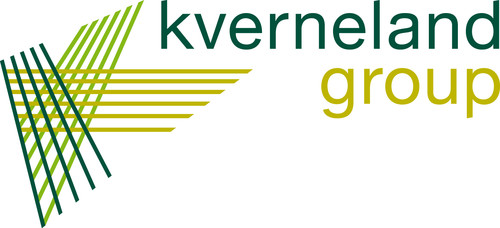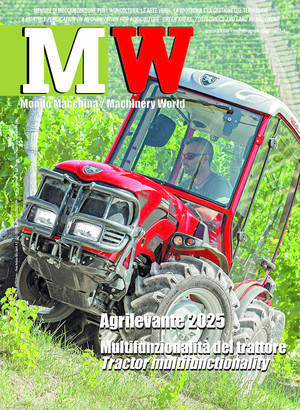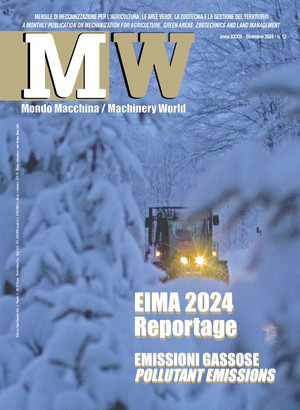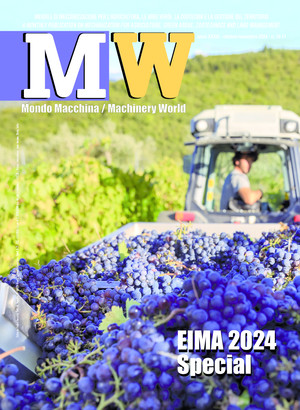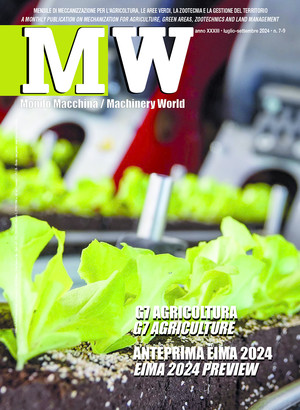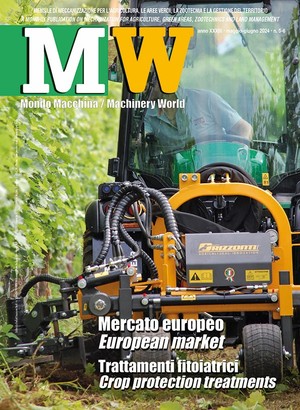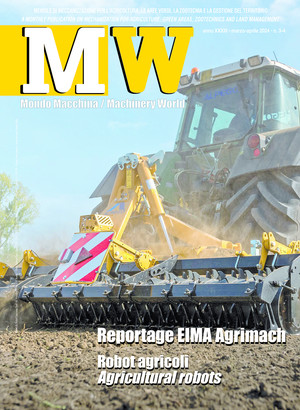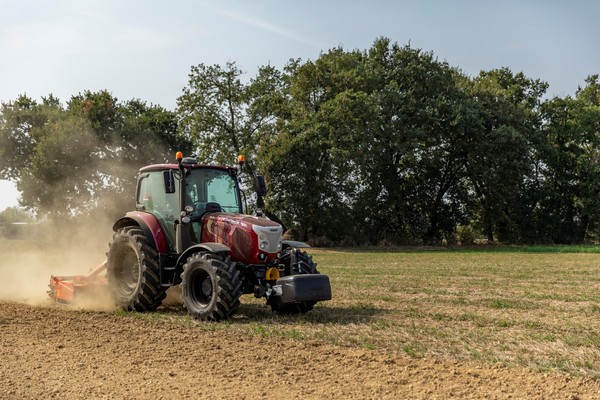
Public incentives, a complex matter
The agricultural mechanization sector requires significant investments to modernize an aging machinery fleet and introduce new technologies. It is necessary to further strengthen the public incentive system
Navigating the realm of public subsidies for agricultural machinery may not be an easy task, as neither may be the procedures in place to access incentives. In fact, the subject is so highly technical that it is even difficult to take stock of the national situation. Let's proceed in order, then, starting from the certainties.
One of these is the New Sabatini which the Budget Law at the end of 2024 refinanced with EUR 1.7 billion for a sufficiently long period, from 2025 to 2029. It is sponsored by the Ministry of Business and Made in Italy (MIMIT), to support investments by micro, small and medium-sized enterprises in the purchase of capital goods, machinery, equipment and software. The incentives under the Sabatini Law include a refinancing of EUR 400 million in 2025, 100 million in 2026 and another EUR 400 million for each year from 2027-2029.
As MIMIT itself points out, the measure consists in the granting of contributions (for facilities and equipment) by the Ministry in exchange for financing (bank loans or leases), provided by banks/financial intermediaries participating in the measure, intended for three main areas. Investments in capital goods (machinery, systems, business capital goods and hardware, as well as software and digital technologies intended for existing or new production facilities), investments in 4.0 technologies (technologies, big data, cloud computing, ultra-broadband, cybersecurity, advanced robotics and mechatronics, waste tracking and weighing systems), green investments (low environmental impact equipment intended to improve the eco-sustainability of products and production processes).
MIMIT also states that the new line of "Support for capitalization" financing has also been active since October 1, 2024, which grants SMEs established as joint-stock companies a greater amount than usual in exchange for investments in capital goods, 4.0 and green goods linked to an increase in share capital.
INAIL's call for the submission of funding requests for safety reasons. Also included among the certainties is INAIL's notice, which was prepared to allow agricultural companies to obtain non-repayable grants for the purchase of innovative machinery and equipment, with the specific objective of improving health and safety at work, as well as promoting environmental sustainability. The National Institute for Insurance against Occupational Accidents has just announced the two key dates for collecting applications: the opening of the call for applications set for April 14, 2025 and the deadline set for May 30, 2025. The program will finance projects that involve the purchase of new tractors and agricultural or forestry machinery, characterized by innovative solutions aimed at reducing polluting emissions; decreasing noise levels; improving the overall performance and sustainability of the company; reducing the risk of accidents and heavy manual operations. The financing covers a percentage of eligible expenses, which varies according to the beneficiary: up to 65% as a non-repayable grant for agricultural businesses in general, up to 80% as a non-repayable grant for young farmers (up to 40 years of age) with a maximum amount that can be disbursed for each individual project of EUR 130,000 (and a minimum of EUR 5,000).
Transition Plan 5.0 and MIMIT's reassurances. There was much discussion about Transition Plan 5.0 and its limits of operational applicability at EIMA International. It is no trifling matter, considering that EUR 6.3 billion have been allocated to this program, which is an environmental evolution of Industry 4.0. And just in these past few days confirmation was received from the Ministry of Business and Made in Italy: agricultural businesses will be able to benefit from the minimum tax credit of 35% by decommissioning a machine in Stage I or earlier to purchase one in category Stage V. Not a trivial thing in and of itself but, considering the antiquity of the national machine fleet, a feasible operation especially after overcoming the complexities related to the calculation of the energy savings achievable by decommissioning the old vehicle and purchasing the new one.
MIMIT confirms that agricultural businesses will be exempt from calculating the energy savings achieved, with the application of the parameters provided for the first bracket equal to a 35% tax credit, projects with replacement and possible decommissioning of machinery that have completed the depreciation period for more than 24 months, provided that the new asset is characterized by an improvement in energy efficiency verifiable on the basis of what is provided for by industry standards or practices and that it has technological features similar to the asset being replaced. Demonstrating the increased energy savings by submitting the detailed documentation required by the Plan, the company will be able to access the increased tax credit of up to 45%.
The ISMEA Innovation Fund. One of the most anticipated calls for the submission of funding requests by companies is that of the ISMEA Innovation Fund with which the Institute aims to promote the development of innovation projects aimed at increasing productivity, through digital management of the company, the use of advanced machines, robotic solutions, sensors and 4.0 platforms and infrastructures. The operation for the 2024 fiscal year, for which ISMEA allocated EUR 100 million in non-repayable funds, has recently concluded (in mid-December 2024), and the program has been a considerable success, given that approximately 6,500 funding applications have been validated.
National Recovery and Resilience Plan. ongoing investments. Now we come to the extremely complex matter of the National Recovery and Resilience Plan which has set out a specific allocation for the primary sector, delegating the handling of the applications to local government agencies. The ad hoc measure of the NRRP is 2.3 "Innovation and mechanization in the agricultural and food sector" which included a total financial allocation of EUR 500 million. Funds were divided into two sub-measures: 100 million to improve the status of (olive) oil mills and 400 million for the modernization of agricultural machinery to be divided among Regions and Autonomous Provinces. These, each with its own call for the submission of funding requests and figures ranging from EUR 10 to the more than 40 million from Apulia available, are financing investments for innovative and environmentally sustainable machinery. Following the procedure indicated by the decree issued by the Ministry of Agriculture, Food Sovereignty and Forestry (MASAF) on August 8, 2023, after the publication of the regional calls, applicants had until May 31, 2024 to submit applications for assistance. By June 15, 2024, the Regions notified MASAF of the overall value, in euros, of the grants requested and the number of applications received so that, by September 15, 2024, it was possible to get a definitive ranking structure. This was a significant step since, as per the instructions set out by the ministry, the number of beneficiaries had to be at least 10,000 at the national level. This figure has been exceeded because each region has identified and will finance several hundred beneficiaries. Solely to give some significant examples that mirror the entire Peninsula, in Lombardy over 1,100 agricultural and agro-mechanical businesses have been granted funding, in Tuscany the number is around 300, with just as many in the even smaller Umbria, and nearly 600 in Apulia and more than 900 in Sicily. The investments must be completed by December 31 of this year and the application for payment of the balance must be submitted by the beneficiaries with closure of the entire process by June 30, 2026, with the disbursement of the grants to all beneficiaries.
Rural Development Plans. Even more complex is identifying measures specifically dedicated to mechanization in the ever-changing world of Rural Development Plans. The Italian CAP Strategic Plan included 173 operations with a total financial allocation of almost EUR 37 billion for the period 2023-2027. The plan, through regional RDPs, sets 'high' objectives such as improving the competitiveness of the agri-food and forestry system, promoting environmental sustainability and increasing the adoption of innovative and 'saving' technologies.
This is the context in which funding for the modernization of agricultural businesses comes into play, a context in which several regional government agencies have introduced incentives for the purchase of machinery and equipment. In other cases, the calls for submission of applications for funding include measures that finance the adoption of conservation techniques (as did, for example, Lombardy) has served and serves as a driving force for the acquisition of specific equipment.
Even within a fairly well-defined national framework capable of outlining the scope of fundable operations, some choices relating to mechanization and equipment remain under regional supervision. And considering that there are still three years of planning ahead, it is worth continuing to follow the issuance of the forthcoming implementing calls with some attention. In general, however, the situation is in constant movement even at the EU level. Just in the last days of February 2025, the European Commission presented the Green Industrial Deal with its three key objectives: reducing energy prices, promoting demand for clean products and financing the environmental transition. A plan for which the EU government intends to mobilize a very significant amount of money - up to EUR 100 billion - and which are certain to have consequences on the mechanization sector, both at an industrial and end-user level.
Valentino Federici

